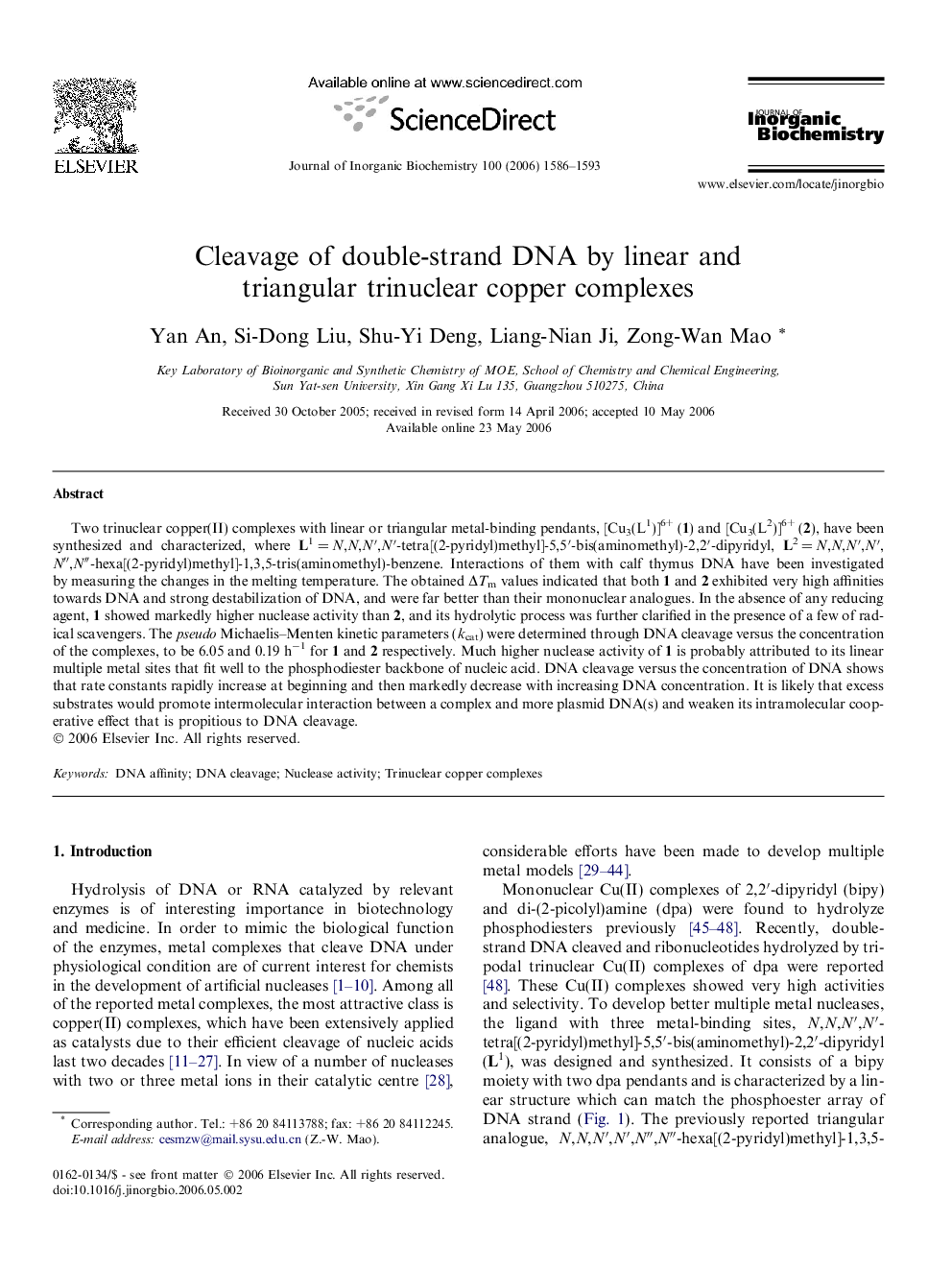| Article ID | Journal | Published Year | Pages | File Type |
|---|---|---|---|---|
| 1317600 | Journal of Inorganic Biochemistry | 2006 | 8 Pages |
Two trinuclear copper(II) complexes with linear or triangular metal-binding pendants, [Cu3(L1)]6+ (1) and [Cu3(L2)]6+ (2), have been synthesized and characterized, where L1 = N,N,N′,N′-tetra[(2-pyridyl)methyl]-5,5′-bis(aminomethyl)-2,2′-dipyridyl, L2 = N,N,N′,N′,N″,N″-hexa[(2-pyridyl)methyl]-1,3,5-tris(aminomethyl)-benzene. Interactions of them with calf thymus DNA have been investigated by measuring the changes in the melting temperature. The obtained ΔTm values indicated that both 1 and 2 exhibited very high affinities towards DNA and strong destabilization of DNA, and were far better than their mononuclear analogues. In the absence of any reducing agent, 1 showed markedly higher nuclease activity than 2, and its hydrolytic process was further clarified in the presence of a few of radical scavengers. The pseudo Michaelis–Menten kinetic parameters (kcat) were determined through DNA cleavage versus the concentration of the complexes, to be 6.05 and 0.19 h−1 for 1 and 2 respectively. Much higher nuclease activity of 1 is probably attributed to its linear multiple metal sites that fit well to the phosphodiester backbone of nucleic acid. DNA cleavage versus the concentration of DNA shows that rate constants rapidly increase at beginning and then markedly decrease with increasing DNA concentration. It is likely that excess substrates would promote intermolecular interaction between a complex and more plasmid DNA(s) and weaken its intramolecular cooperative effect that is propitious to DNA cleavage.
